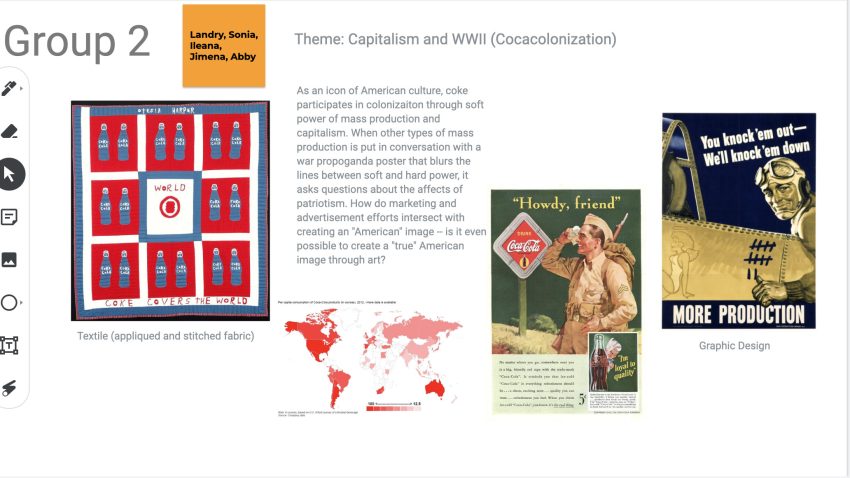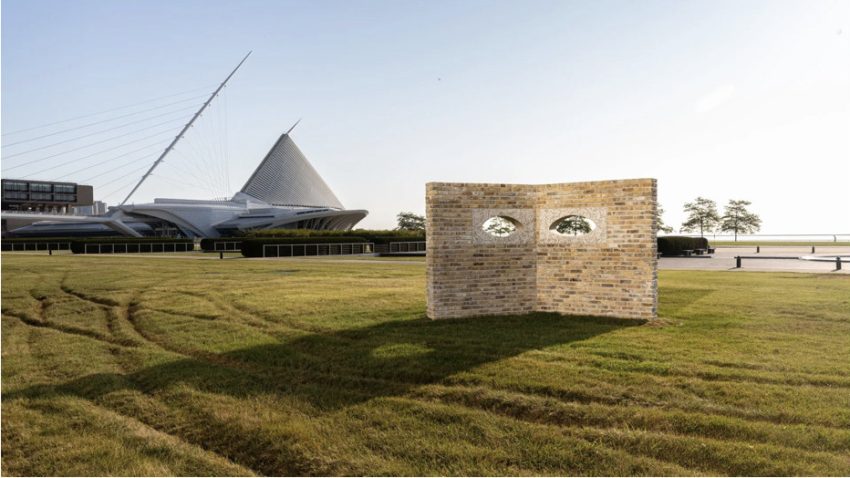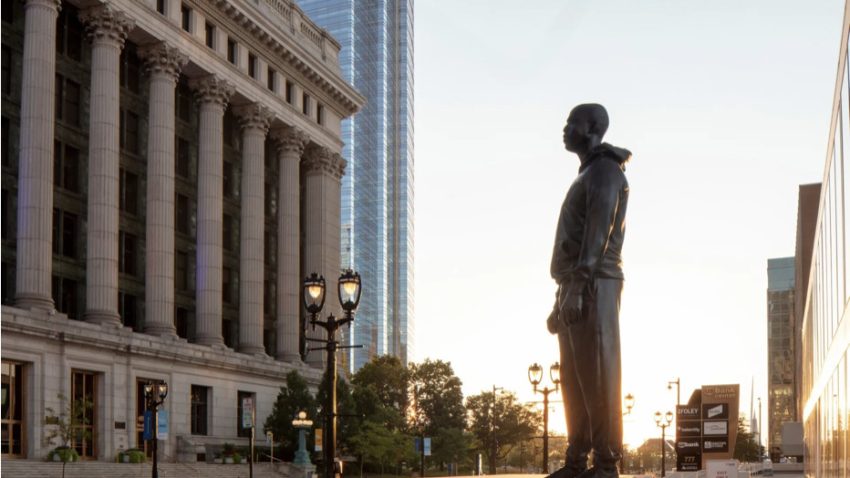 I had no idea where to start while writing this reflection. Logically, I went back and read reflections from the last time this course was offered in January of 2020. Illogically, I assumed I’d be able to gather some inspiration about how and what I could reflect on by reading the experiences of a class offering pre-pandemic. How can one compare marveling at the sights of the National Mall in person to seeing a pixelated version of it through the Google Maps Street View feature?
I had no idea where to start while writing this reflection. Logically, I went back and read reflections from the last time this course was offered in January of 2020. Illogically, I assumed I’d be able to gather some inspiration about how and what I could reflect on by reading the experiences of a class offering pre-pandemic. How can one compare marveling at the sights of the National Mall in person to seeing a pixelated version of it through the Google Maps Street View feature?
The short answer is, you can’t.
At first, I felt bitter about not being able to experience this program in person. But this disappointment didn’t come with a lack of other valuable lessons learned. The world is changing. Socialization and culture is changing. The arts are changing. With the pandemic, arts and cultural institutions have had to adjust and implement new programming which includes virtual live and recorded exhibits and performances. And we got to experience this development as it is intended!

Virtual activity done with the Smithsonian American Art Museum
Our exercises done with the representatives from the Smithsonian American Art Museum is exactly the type of programming that can be and is being done by educators, curators, and artists to encourage cultural engagement with new and returning audiences that I’m sure will be continued after the pandemic (“after” may be a bit ambitious, but one can dream).
Now, I feel more longing to continue my exploration of democracy and artistic expression than ever before because of the space I experienced this program in.
Physically, I sat at my desk, on my bed, in our dorm common room, and at the Cage while engaging with speakers and exhibits that are (obviously) not where I was. In reading past student reflections and figuring out what I want to say in this post, the first concept that came to mind is the importance of both physical and non-physical space. Comparing our two cohorts’ experiences is a very concrete example of the importance of access to exhibition, creative, and educational spaces. We had clearly different experiences and consequential takeaways, which mirrors the same effect on audiences based on space and location.
The biggest takeaway I had throughout this course was surprising to me. As someone who has grown up enjoying working with students, peers, and family members of different abilities, one (including me) would think that I had thought about barriers to access in the performing arts thoroughly. And I think I have thought a lot about it, but more so in regard to economic accessibility. Speaking with Betty Siegel and other representatives from the Kennedy Center Office of Accessibility showed me how important basic accessibility devices like large print and Braille programs are (conveniently enough, that was the inspiration for my entire policy proposal).
Talks about accessibility and equity in the arts in this course also helped me to pinpoint exact examples of how my interests in law and the arts intersect. Arts and cultural organizations serve as a foundation for society, just as law and policy does. I had never thought about the need for lawyers and legal advice when it comes to federal grants funding for arts organizations, but now see how necessary it is in the relationship between democracy and the arts. My experiences studying subjects like sociology and psychology in addition to music at St. Olaf has increased my ability to think about the ways in which the arts intersect with the structure and function of society.
To me, this relationship between democracy and the arts is fluid and ever changing. Decades ago, things like economic and physical accessibility in the arts were rarely being talked about, let alone at the forefront of priorities of arts and cultural organizations. The pandemic has revealed how crucial it is to adapt and adjust to our ever changing culture and needs. For example, arts audiences and supporters are becoming increasingly aware of repatriation and shared stewardship efforts by museums collections, galleries, and exhibitions, as was noted in our discussion with representatives from the Smithsonian Center for Folklife and Cultural Heritage.
During the latter half of this course especially, I thought a lot about the ways in which I participate in art in my home community. I began to realize that despite being heavily involved in music, that participation was never in my immediate community nor did it regularly expand past music to other art forms. This really began to settle in when we spoke with members from the Northfield Arts and Culture Commission. I realized that I had never seen any art installations or community creative spaces in my immediate community like what was described as being available in Northfield. There is plenty of this type of art available in any neighboring communities like Milwaukee and even Racine.
As was the inspiration for my Choose-Your-Own-Adventure post, I found out that my home community is making steps towards having a committee body that will focus on fostering a more accessible and present arts community in our area. With the knowledge that I’ve gained from our talks with experts in the field of arts advocacy and each other, I think that I have gained a better understanding of the complications that come with engaging in communal art and culture.
Perhaps the biggest complication I came across was truly accepting that the arts are not inherently “good”. It’s so easy to have a good experience in an art community and use that experience to project the values and benefits onto others assuming they have the same perspective. I think that this idea has helped me to understand the perspective of other members of my community who aren’t as supportive of the arts and who I have quite honestly resented while growing up. This caused me to ask questions about why someone might have a good reason to not support or appreciate the arts instead of assuming that they’re just bitter or don’t have the education to understand why the arts can be so beneficial to communities.
Going forward, I want to challenge myself to ask people why they have certain attitudes towards the arts as opposed to telling them why they should have mine. In this same spirit, I think that in my home community’s efforts to establish an arts and culture board of sorts, they should put significant effort into asking people why they wouldn’t want to see a committee like this in their community. If I were involved in this process, I would follow up to ask what would genuinely make them want or appreciate such a committee as opposed to telling them what they need.


